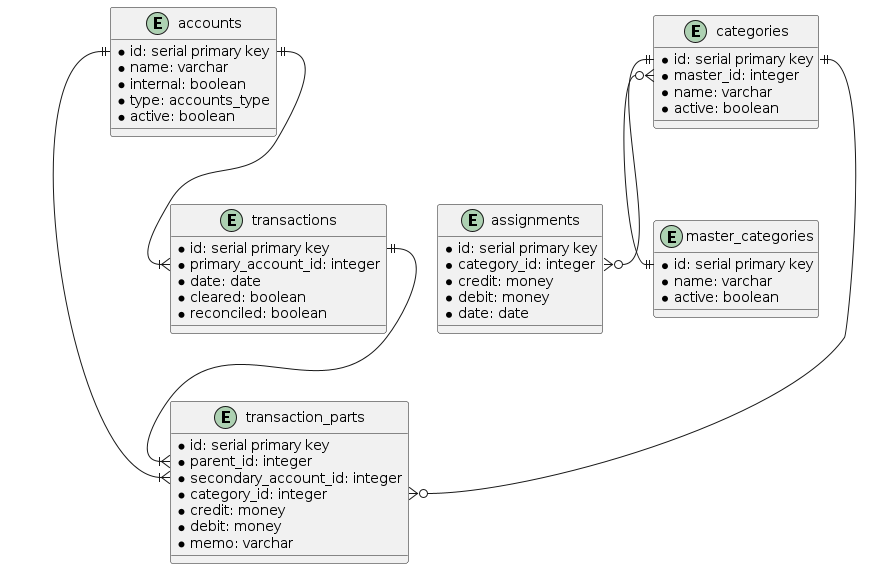I think the best place to start is with the database design. In my latest commit ,ade0b16, I have created an Entity-Relationship Diagram using PlantUML, and I have attached the resulting image to this comment.

There will be an accounts table for tracking payers and payees. These payers and payees may be one of the user's accounts at a financial institution (where accounts::internal == true), or any other entity which one of the "internal" accounts transact with (where accounts::internal == false). Some examples of "external" accounts include vendors the user purchases good or services from, and clients or employers for receiving payments/payroll. Each account will have an "account_type" such as checking, savings, line-of-credit, or external to allow for specialized handling within the app. Accounts also have an "active" attribute to determine visibility of accounts within the app.
The categories table will track budget categories, master_categories is used to group categories (e.g. Groceries and Transportation might be grouped as Spending Money, Vacation or New Computer might be groups as Savings Goals). Both categories and master categories have an active attribute, again to control their visibility within the app.
The assignment_ledger table tracks the assignment of funds to categories and removal of funds from categories either for reassignment or for use to cover a transaction.
The tracking of transactions between accounts is split into 2 tables, transactions and transaction_parts. This allows for a transaction to be split between multiple categories and/or multiple payee accounts. As an example a user might purchase goods in multiple categories from a retailer through a single transaction, or the user may withdrawal cash from an ATM to pay multiple payees (which would appear as a single withdrawal to the user's financial institution).
As such the transactions table will track a primary account, as well as transaction date, and the cleared and reconciled statuses. The transaction_parts table will reference the parent transaction and it will track the secondary account, category, transaction amount, and memo for that part of the transaction.
The project will start with a postgres backend driven by a deno/oak API. An Angular client will interface will interface with the API. I'll need to break down the steps to initializing the different parts of this project.